
Often regarded as Serbia's tourism capital, the resort town of Zlatibor serves as a gateway to the region with which it shares a name. This corner of Western Serbia has a long tradition of tourism that dates back to more than a century ago, when in 1893, the then king of Serbia, Aleksandar Obrenović, established the town's first spa and health resort, ultimately laying the foundation for Zlatibor's modern-day popularity. Whereas most visitors come here for ski or spas, Zlatibor has plenty of unconventional places to explore, complementing its more touristy activities.
Nestled within the locality of Mokra Gora, where Tara and Zlatibor mountains converge, Drvengrad might seem like a typical rural settlement in the Balkan. Yet in fact, it is an artificially built village, originally erected by the world-renowned director, Emir Kusturica, as the shooting location for the 2004’s film “Life is a miracle“.
Also known as Küstendorf, a quip merging Kusturica’s name with the German word for village, the quaint complex was never dismantled, serving as the current home for its famed founder who transformed it into a recreational and cultural center that attracts curious visitors from all over the world.
Drvengrad’s main street, home to a café, pastry shop, art gallery and a boutique store.
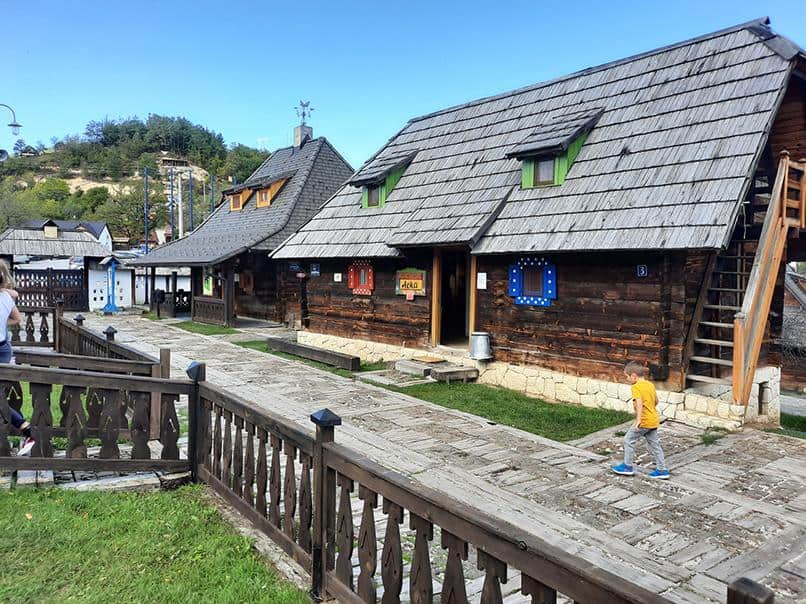
photography by: Omri Westmark
The village’s main landmark is undoubtedly St. Sava Church, named after a prince who also was the Serbian Church’s first archbishop. Additionally, the wooden structure is inspired by traditional timber churches in Russia, that can be found abundantly throughout its rural parts.
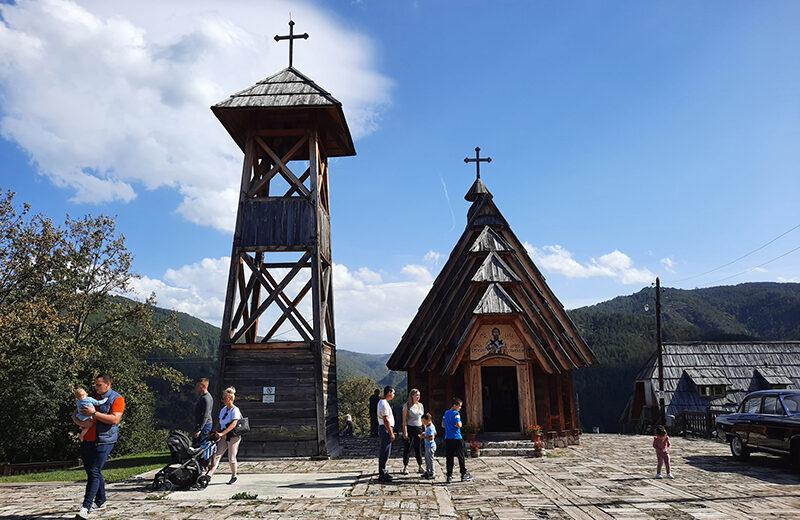
photography by: Omri Westmark
The church was meticulously designed to resemble an authentic old chapel, including a series of Orthodox icons, depicting key figures of eastern Christianity.

photography by: Omri Westmark
All streets in Drvengrad are named after famous figures that Kusturica cherishes and admires, most notably the Argentine soccer player, Diego Maradona, the famed revolutionary, Ernesto Che Guevara, the Serbian scientist Nikola Tesla and Ivo Andrić, a Yugoslav writer who created the renowned novel “The Bridge on the Drina” which depicts several significantly historical events, revolving around the Mehmed Paša Sokolović Bridge in nearby Višegrad.
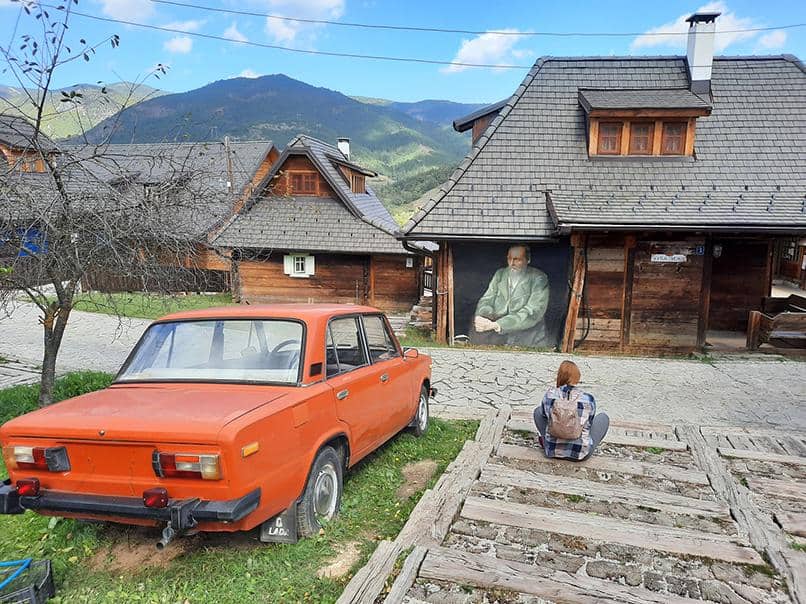
photography by: Omri Westmark
Scattered around the village are several labelless old-style cars, one of many objects and features that were meant to give visitors a sense of authenticity. Whether those silent extras achieve their intended goal, it’s up for you to decide, one thing is for sure, dedicated Instagramers would find it as the perfect backdrop for their next multi-liked post.

photography by: Omri Westmark
Some of the log cabins that once stood purposelessly now host vendors who sell a hodgepodge of traditional liquors, knick-knacks and the film-related souvenirs.

photography by: Omri Westmark
Perching on the village’s downhill part is Konak café. Besides its live music and brilliant menu, it has a balcony that overlooks the surrounding rural landscape.
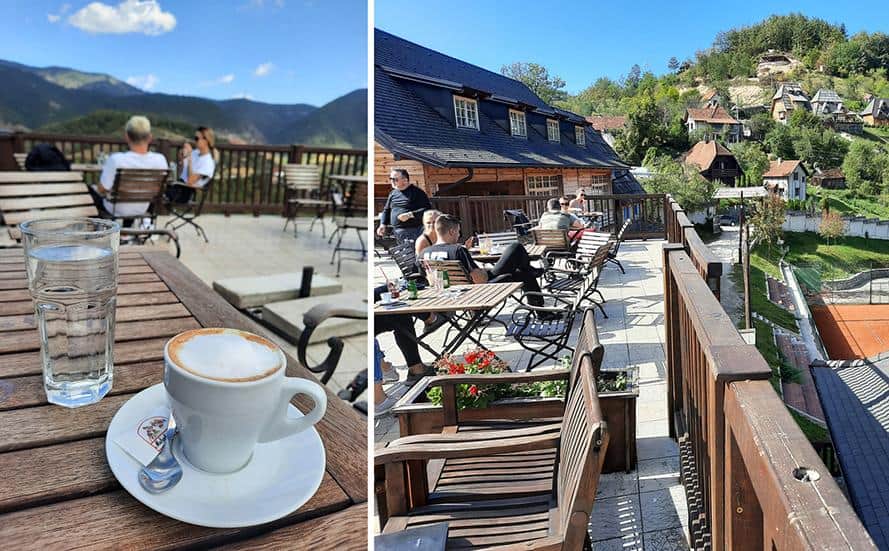
photography by: Omri Westmark
Following the film premiere, Emir Kusturica turned his timber settlement into a cultural center, where people from all across Serbia and beyond would come to study cinema and arts. Interestingly, Kusturica and his family call Drvengrad home to these days, so if you get lucky enough you might bump into him while strolling throughout the narrow alleys.
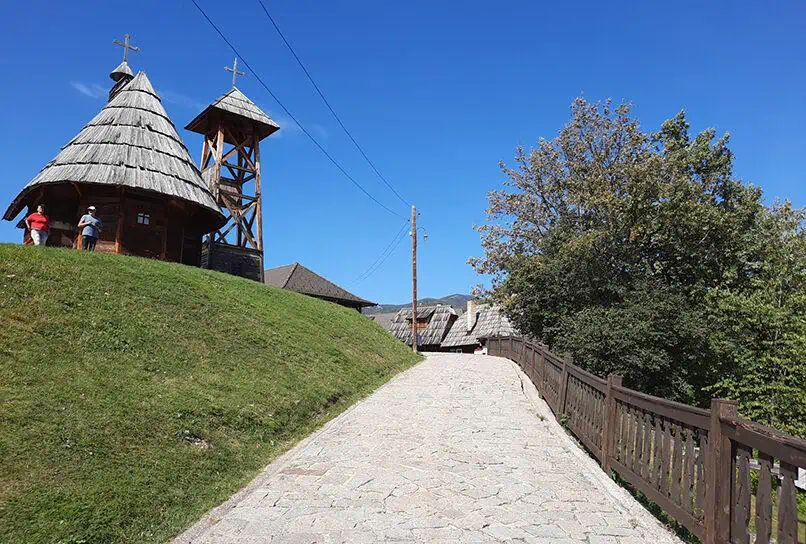
photography by: Omri Westmark
Blessed with Mokra Gora’s expansive views is Drvengrad’s guesthouse that offers its guests a somewhat exceptional experience of an overnight stay in a former filming location.
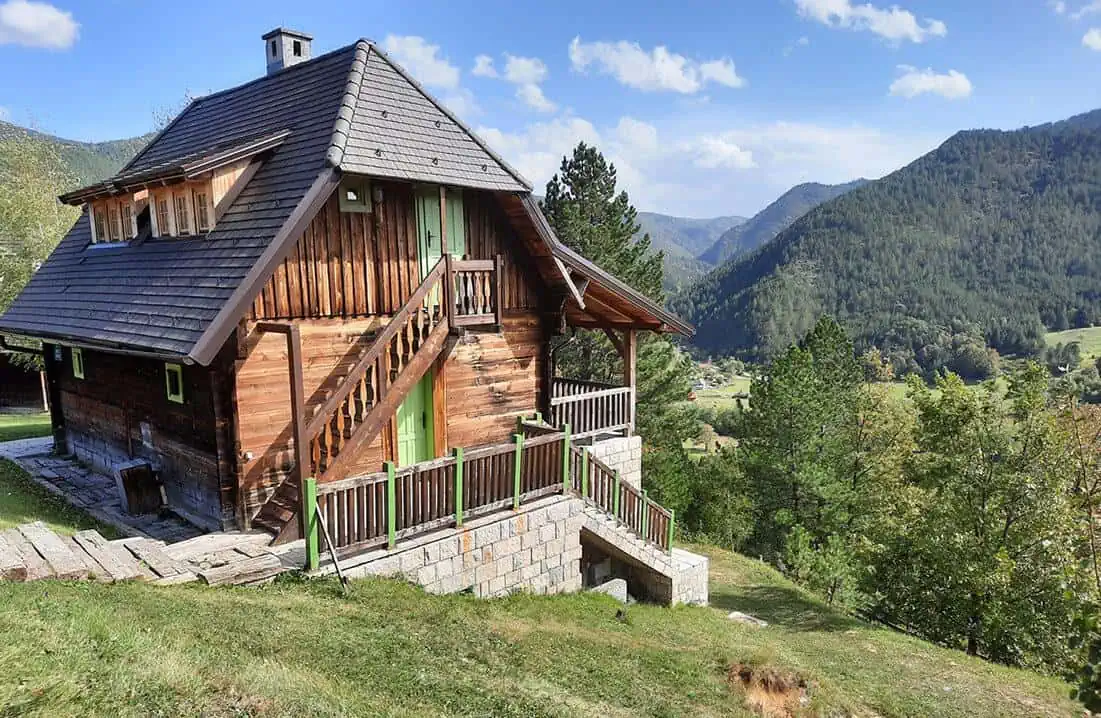
photography by: Omri Westmark
The tennis court is only one of myriads of amenities enjoyed by Drvengrad’s guests and residents, alongside a gymnasium, a sauna and a swimming pool.
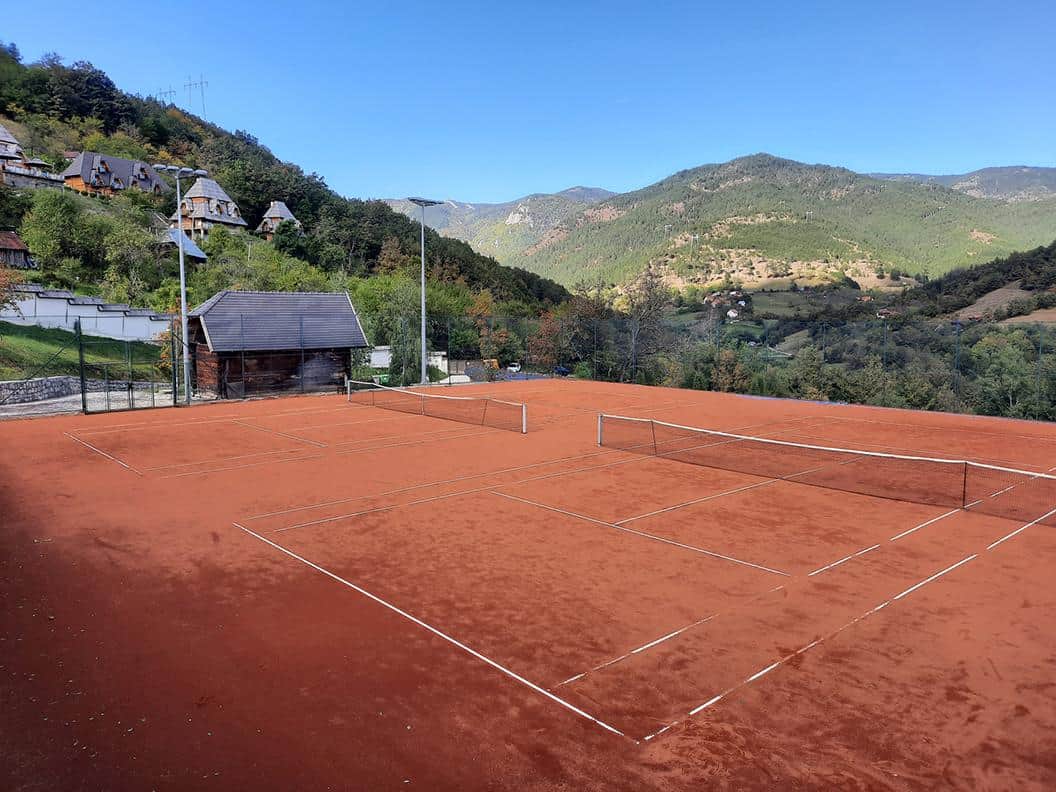
photography by: Omri Westmark
The walkway along the guesthouse’s rear side. The wooden railing as well as the manicured lawn are a dominant feature across the village, and perhaps one of the elements that visually differentiate it from a real rural community.
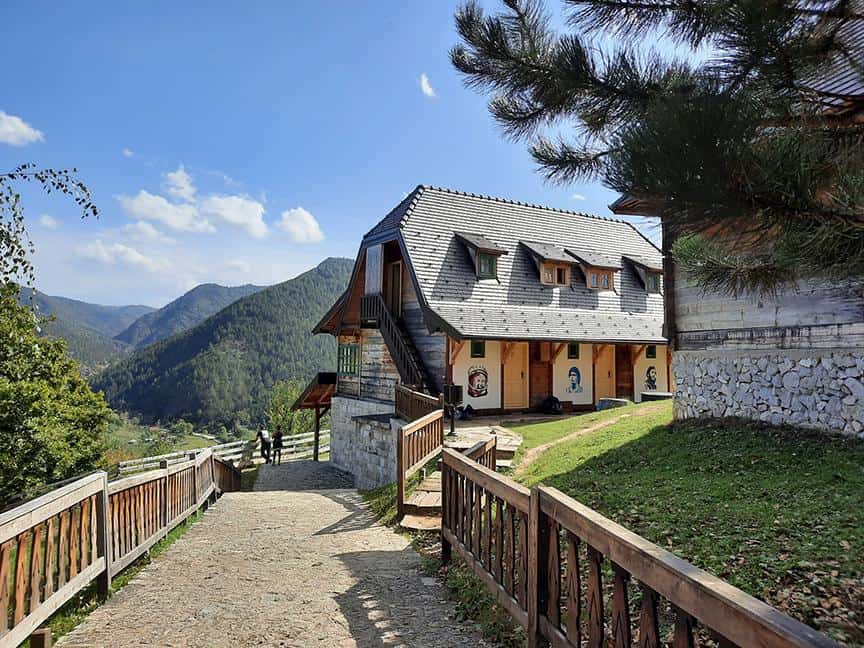
photography by: Omri Westmark
The guesthouse rear side is embellished by several portraits, including ones of Diego Maradona and Ernesto Che Guevara, two of the most prominent Argentines who ever lived, and deeply revered by Kusturica as previously mentioned.
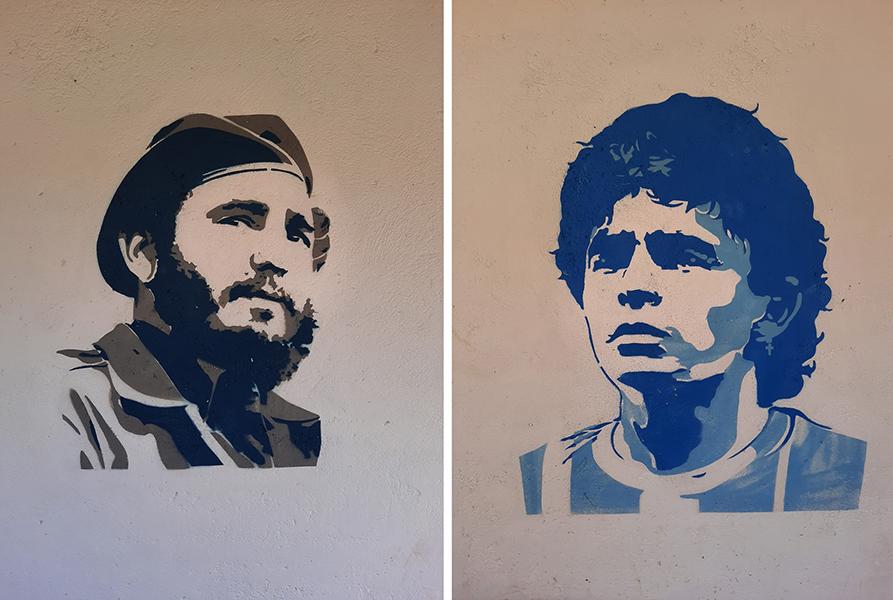
photography by: Omri Westmark
On the other hand, George W.Bush, U.S former president, sits behind bars in one of Kusturica’s more controversial murals. On the left: a figure of white cat adorns the otherwise nondescript wooden façade of a timber house.
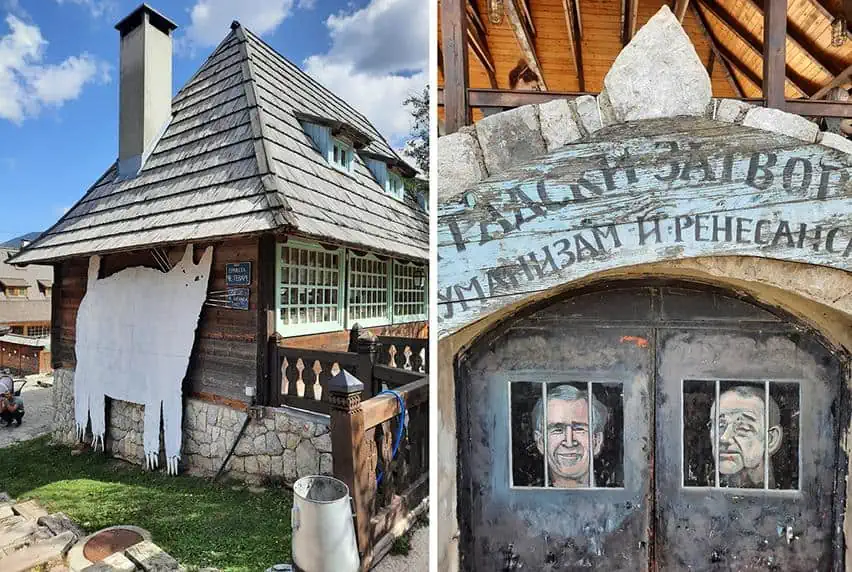
photography by: Omri Westmark
Drvengrad annually hosts the Küstendorf Film and Music Festival, providing young filmmakers from Serbia and all over the world a precious opportunity to make their first steps in the industry, as well as being a meeting place for well-known figures from the entertainment world. The event is probably most famous for its movie burial ceremony, where symbolic funerals are held for a handful of supposedly bad movies.
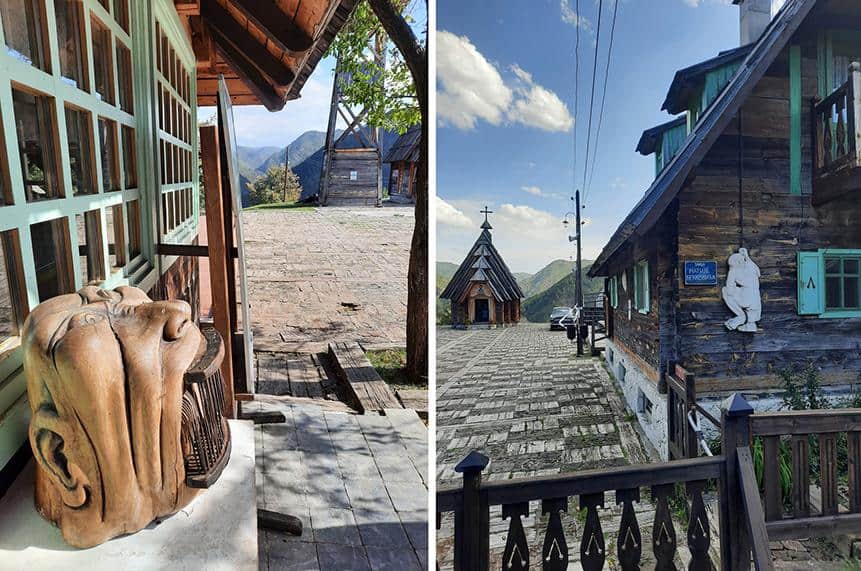
photography by: Omri Westmark
Hidden within the northeastern side of Mount Zlatibor, between the villages of Trnava and Rožanstvo, Stopića Pećina is one of Europe’s most impressive limestone caves, and yet it’s not widely visited by foreign tourists due its relative remoteness and the lack of publicity.
Named after the small hamlet of Stopići, a part of Rožanstvo’s jurisdiction, this natural hideaway is defined as a river cave, as the Trnavski stream flows through most of its main chamber. However, what makes Stopića Pećina exceptionally awe-inspiring are its Bigrene tubs, a series of bathtub-shaped terraces made of tufa, where water gently cascades downwards. Following heavy rainfalls, when the natural bathtubs are fully inundated, the spectacular 10 meter tall “Spring of Life” waterfall is formed, rewarding any lucky travelers who happen to be around.
The cave is easily accessible via a road, a parking lot and ultimately a well-maintained pathway that crosses a thick forested area.
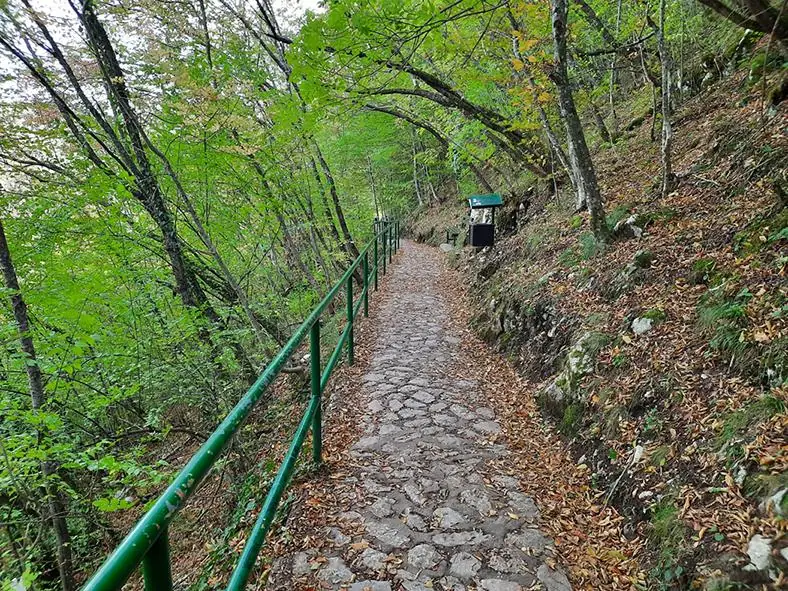
photography by: Omri Westmark
Following a short 10-minute walk, a steep staircase leads downwards, where the Trnavski stream makes its way out of the cave.

photography by: Omri Westmark
The cave’s entrance is insanely dramatic, soaring to a staggering height of 18 meters while also measuring 35 meters in width. It serves as a remarkable appetizer for the rest of the cave, largely implying the upcoming impressiveness that is about to be encountered further ahead.

photography by: Omri Westmark
Flowing along Stopića Pećina’s main trail, the underground stream of Trnavski Potok accompanies visitors as they go deeper into the cave.
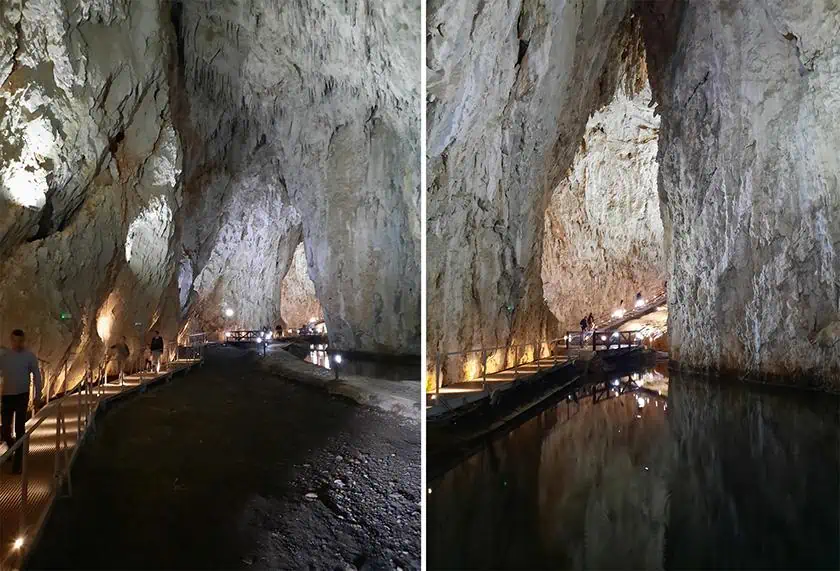
photography by: Omri Westmark
A set of elevated walkways provides a safe passage to the cave’s main points of interests, one of which is a small chamber where limestone slide has been sculptured by the streaming water.
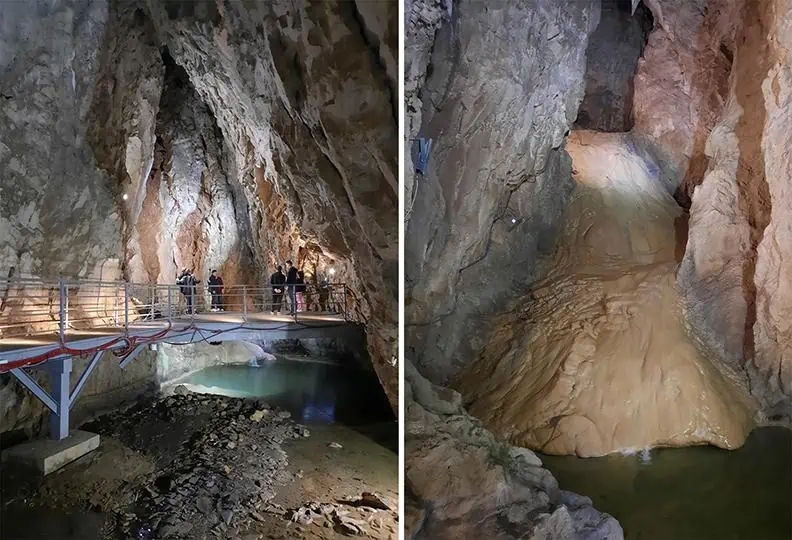
photography by: Omri Westmark
The cave’s most awe-inspiring part, the main hall, is most famous for the Bigrene Tubs, a cluster of naturally made bathtubs, constantly brimming with cascading water. The tubs have irregular rims as if they were created by a non-conforming ceramics artist.

photography by: Omri Westmark
The lack of any daylight reaching this part of Stopića Pećina is supplemented by a breathtaking artificial illumination, intermittently coloring the tubs with vivid red, green, blue, yellow and violet.
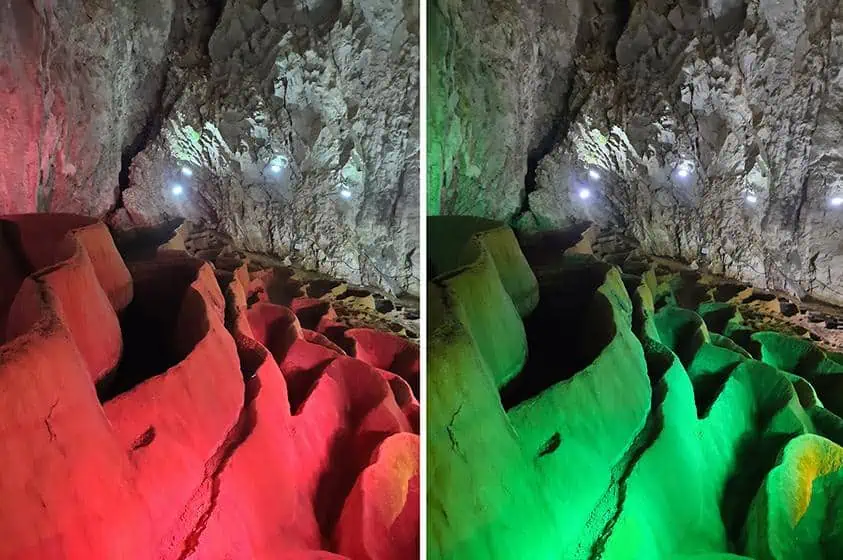
photography by: Omri Westmark
Further ahead, as you ascend the main staircase, lies a small chamber where you’ll be greeted by formidable stalactites and stalagmites.

photography by: Omri Westmark
Some of the oddly shaped limestone formations reach a length of roughly 3 to 4 meters.
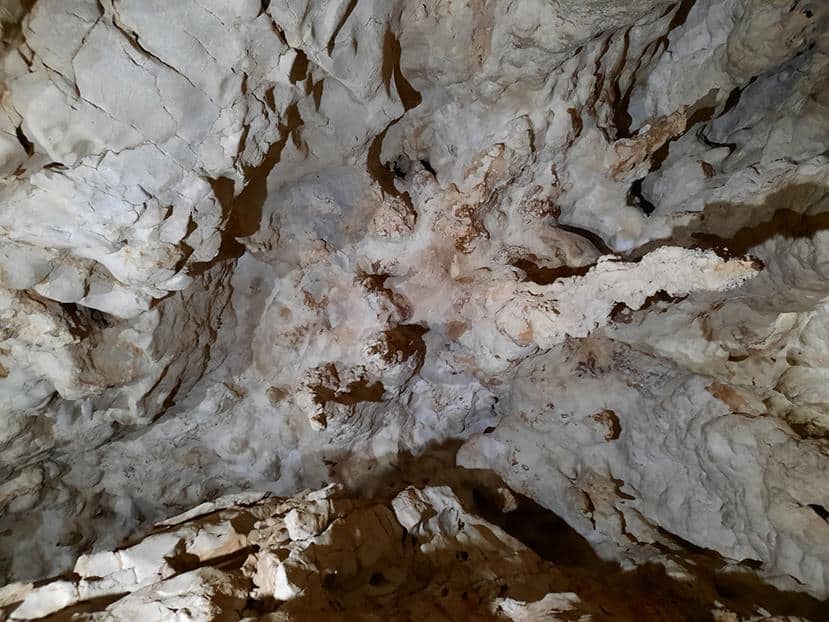
photography by: Omri Westmark
In many similar sites around the world visitors are kept off the fragile stalactites and stalagmites. It comes as a measure of protection from fractures, vandalism and constant physical contact that might harm their growth. However, in Stopića Pećina, people are allowed extremely close, effectively handing them a lot of responsibility to avoid harmful practices out of their good will. As evidently by the numerous black stains (the result of skin oil found in fingers), it not always turns out to be the right decision.
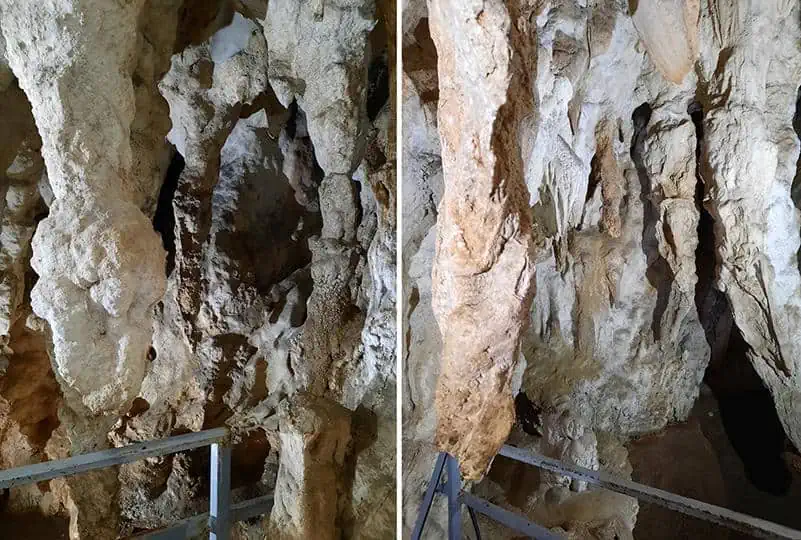
photography by: Omri Westmark
For the urbex enthusiasts among you, the nearby abandoned and derelict Toša’s Spa is one of those eerie places that are often associated with horror movies. Claimed to have medicinal properties for all sort of ailments, the surrounding spring waters have been used by local villagers for centuries.
In 1974, a local businessman, Toša Lazović, constructed a castle-shaped complex, consists of hotel and spa, to attract visitors from Yugoslavia and other countries. The construction lasted for more than two centuries, yet the building was never completed, currently standing empty and dilapidated. To get there just follow the path along the tiny Prištavica river.
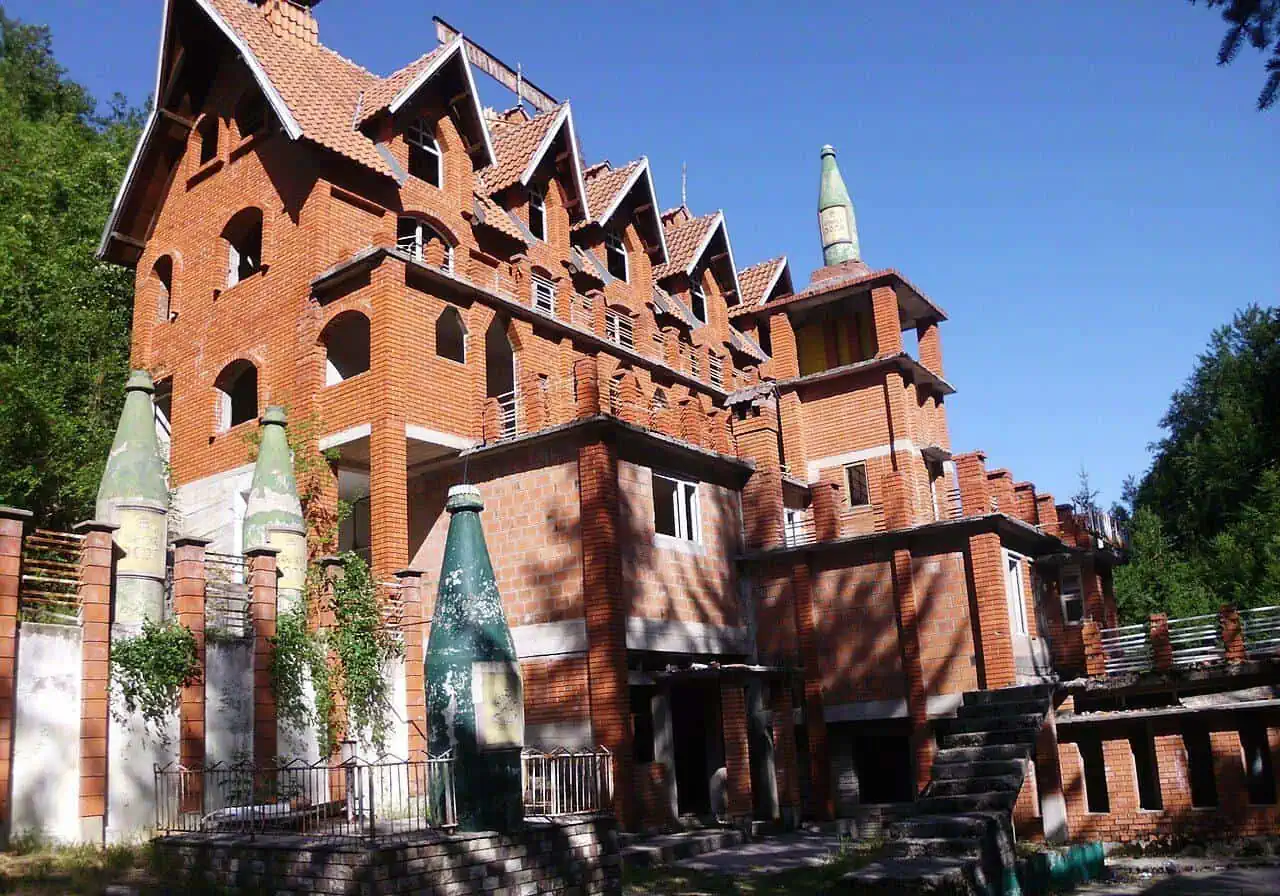
photography by: Kikicikimiki/ Wikimedia Commons
In first glance, the small city of Užice might look uninspiring and mundane as it’s mostly dominated by gritty communist style buildings that eclipse anything else. Nevertheless, with its history dating back as far as the Middle Ages, the city has far more to offer than what first meets the eyes. The remnants of medieval citadel, a large forested area with plenty of hiking trails and scores of fashionable cafés are only a part of what makes Užice a surprisingly attractive place to visit.
Interestingly, the city also played a major role during World War II, where it was the epicenter of the partisan resistance against the Nazi Occupation of Serbia. For a brief moment, Josip Broz Tito, who would become the first president of post-war Yugoslavia, laid his guerrilla forces to some territorial gains and subsequently, to the establishment of the Republic of Užice. While independent Užice was a short-lived political entity, it’s still revered by most Serbs as a heroic victory that ultimately led to the liberation of the country.
Modern day Užice pretty much revolves around its main square, locally known as Trg Partizana. Spanning over 200 meters, from the Đetinja River up to Kralja Petra I St., this urban plaza is absolutely enormous when taking into consideration the city’s overall size of merely 60,000 inhabitants. Surrounded by mostly nondescript buildings, its dominant feature is the rocket-shaped former Zlatibor Hotel, a prime example of Serbian brutalist architecture.
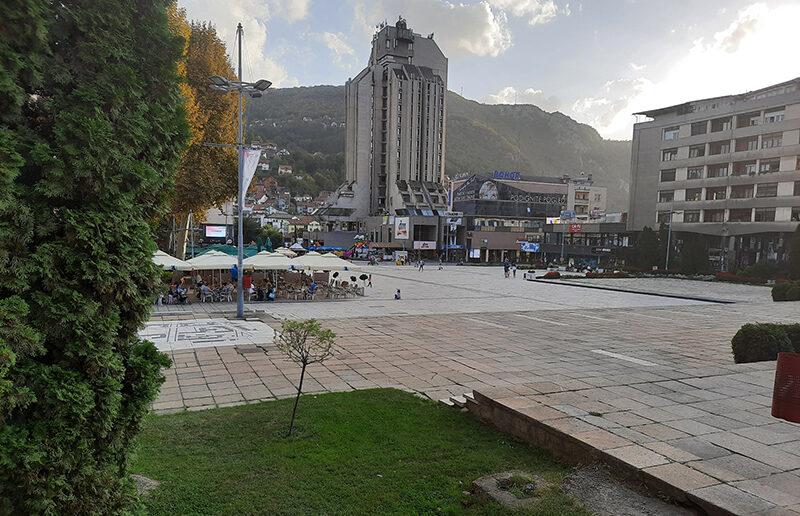
photography by: Omri Westmark
Despite its gritty appearance, the square is home to numerous fashionable cafés with locals socializing while sipping a foamy cappuccino.
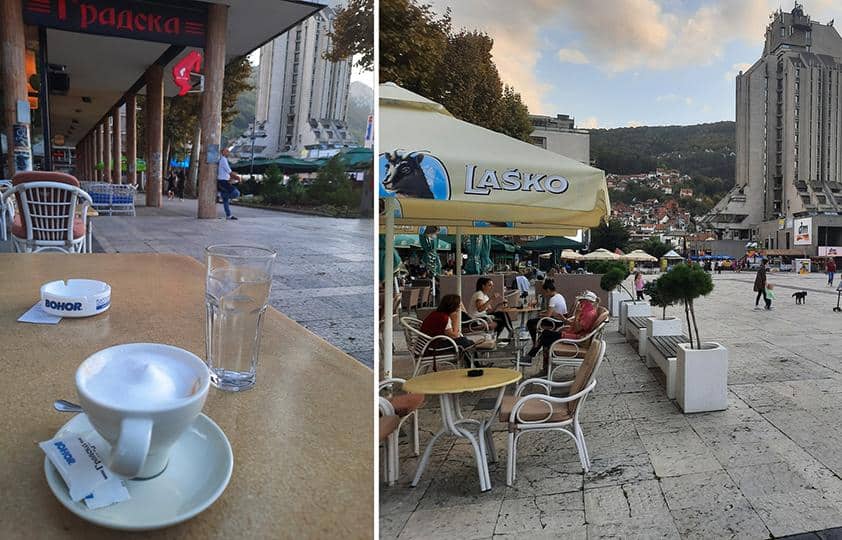
photography by: Omri Westmark
Bordering the main square’s northern side is Užice National Theater, best known for hosting the Yugoslav Theater Festival, where performers from all over former Yugoslavia go on stage, showcasing their most recent shows. The theater’s current building was built in 1968, however, this local institution dates back as far as the 19th century.
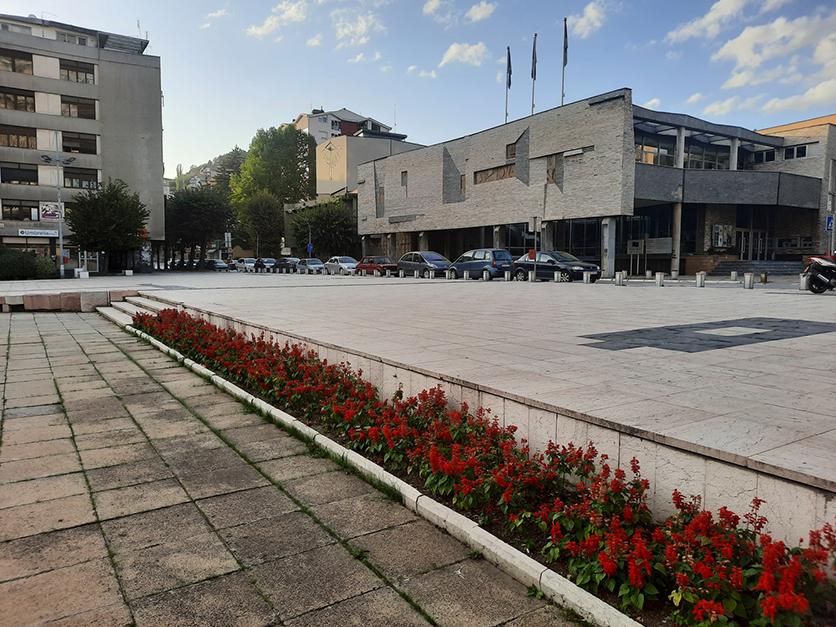
photography by: Omri Westmark
Strolling throughout the city’s lesser-known streets is an opportunity to come across many hidden gems, including small gardens, vibrant street art and weirdly designed fountains.

photography by: Omri Westmark
Even a simple parking is covered by a large-scale mural, transforming it from an eyesore to a pleasant place to hang around.
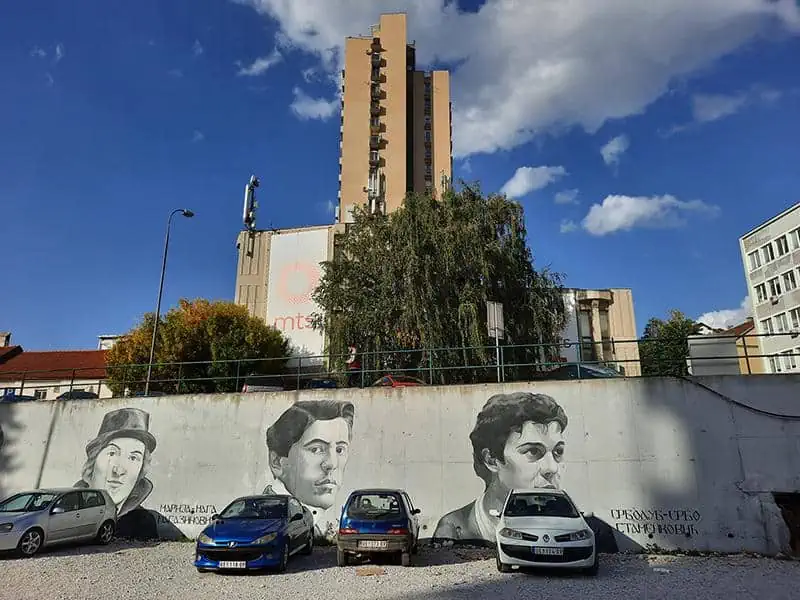
photography by: Omri Westmark
It might not seem that way, but Užice has quite a lot of decent restaurants. One of the city’s most prominent and popular culinary institutions is Naša Priča, offering an ample variety of traditional Serbian style food. A particularly scrumptious starter is the cheese-stuffed prunes wrapped with bacon, a popular snack throughout the country.
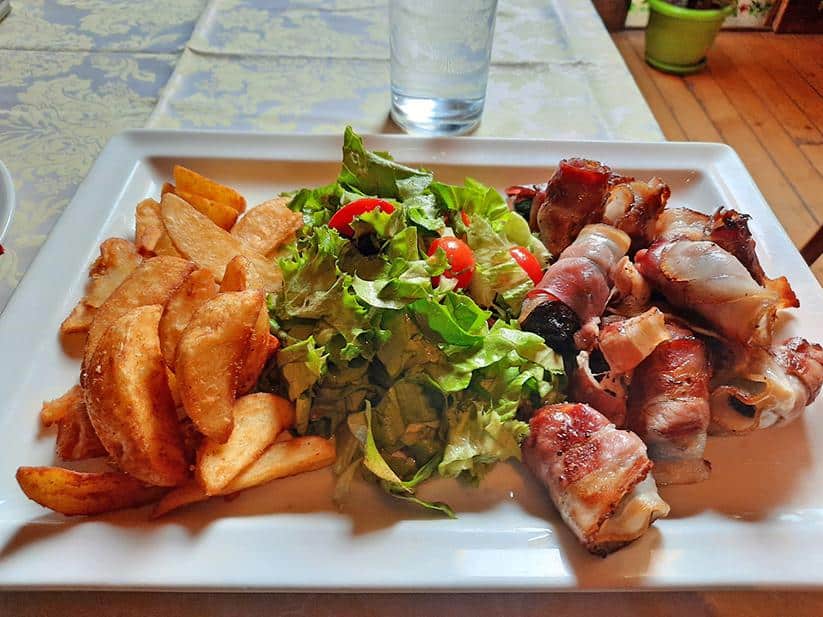
photography by: Omri Westmark
Garnished with olives, cherry tomatoes and baked potatoes, a freshly caught trout from the nearby Drina River served with a parchment paper, whereby it was baked just few moments before.

photography by: Omri Westmark
Užice’s skyline as it seen from the restaurant, where greyish residential high-rises are contrasted by the surrounding verdant and mountainous terrain.

photography by: Omri Westmark
The Đetinja River runs along central parts of Užice, greatly defining its urban character. In the late 1950’s the river was partly dammed to create what is known today as the City Beach, a recreational park that serves as a major magnet for the city’s residents during their spare time.
Nestled further upstream is the world’s third oldest hydroelectric power plant, planned according to the standards of the famed Serbian scientist, Nikola Tesla. 25 years after the power plant ceased all operations, it was fully renovated and transformed into a museum, yet theoretically it can still produce electricity as all its technical equipment was restored as well.
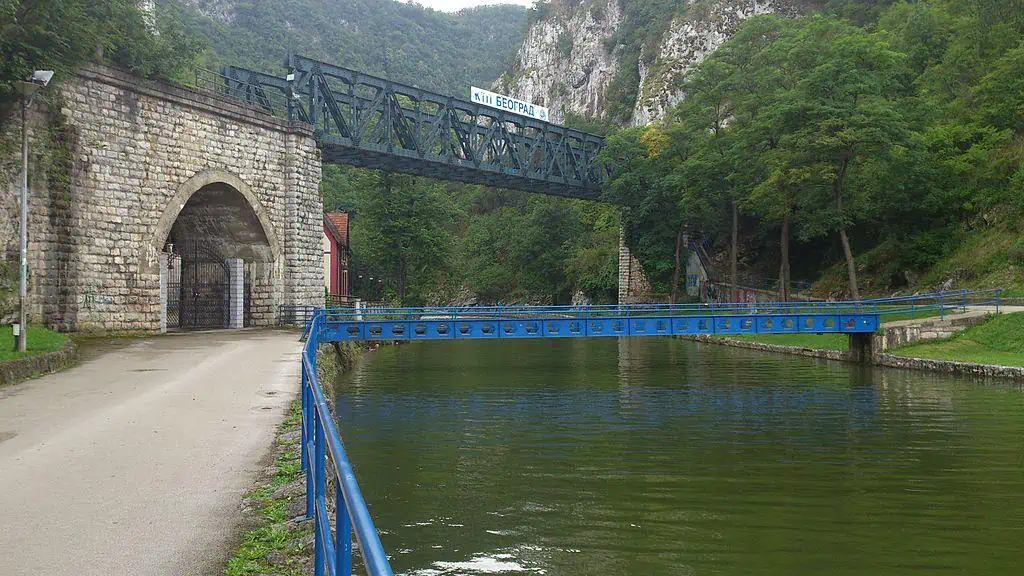
photography by: Михаило Јовановић/ Wikimedia Commons
Dating back to the 14th century, the ruins of Stari Grad are not only the Užice’s most prominent landmark but are also synonymous with the city itself. Perching on a steep cliff and surrounded by the Đetinja River from three sides, the remnants of this remarkable citadel played a major historic role throughout the centuries by defending the city from the numerous invaders that raided the region.
Following the liberation of Serbia from the Ottoman rule in the mid-19th century, the then prince of Serbia, Mihailo Obrenović, ordered the demolition of the fortress, rendering it unsuitable for military use. In 2020, the local authorities launched a series of reconstruction works aiming to restore its once glorious past.
Stari Grad is quite difficult to access, particularly if you get there by foot, which in that case entails an intense ascend through some of the city’s narrowest and lesser-known streets.

photography by: Bjoertvedt/ Wikimedia Commons
To the casual eye, Zlatar Lake, or Zlatarsko Jezero as it’s locally known, might seem like a pristine piece of nature, and while to large extent it certainly is, this body of water was actually artificially created in the 1960’s when the Uvac River was dammed for electricity.
Situated slightly further upstream, the Kokin Brod Hydroelectric Power Plant generates much of the region’s electricity needs, while unintentionally also responsible for one of Zlatibor’s most scenic spots. The lake’s depth varies, yet its deepest part reaches 75 meters, while its total surface area is 7.25 square kilometers, making it the third largest lake in the country.
Approximately a 15-minute drive from nearby Nova Varoš, the lake provides a respite for locals during the scorching summer months, flocking to its lakefront resorts and beaches.

photography by: Omri Westmark
A pair of local vacationists relaxingly fish at the lake’s banks, which also attract picnic lovers who often prepare Serbian style grilled meat, Serbia’s most typical staple food.
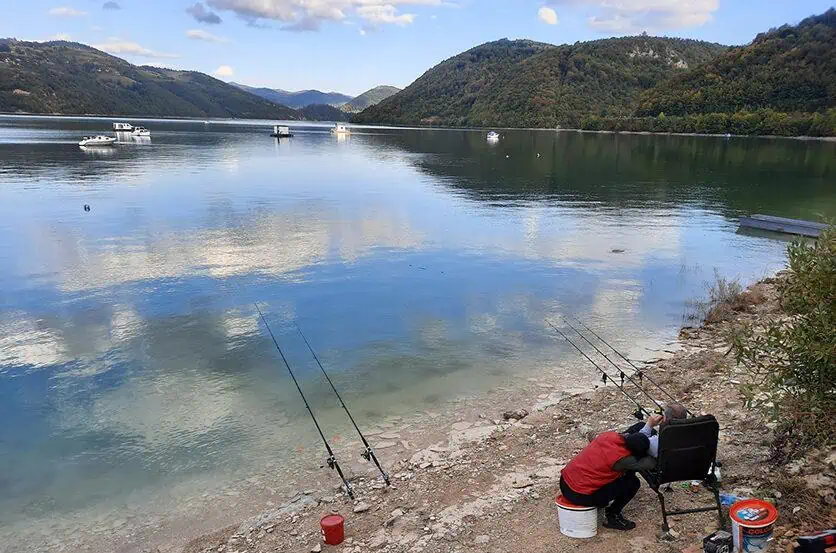
photography by: Omri Westmark
Additionally, the lake is home to host of aquatic activities, including boating, kayaking and swimming, particularly from April to September when the weather conditions are favorable.

photography by: Omri Westmark
Even if you aren’t a big fan of aquatic sports, you’ll find the lake extremely charming, as its banks are littered with dozens of secluded nooks, interesting places to explore and scenic spots.

photography by: Omri Westmark
Zlatar’s visitor center offers a public toilet, a restaurant and a reception desk where one can book the numerous recreational activities in the lake and its surroundings.
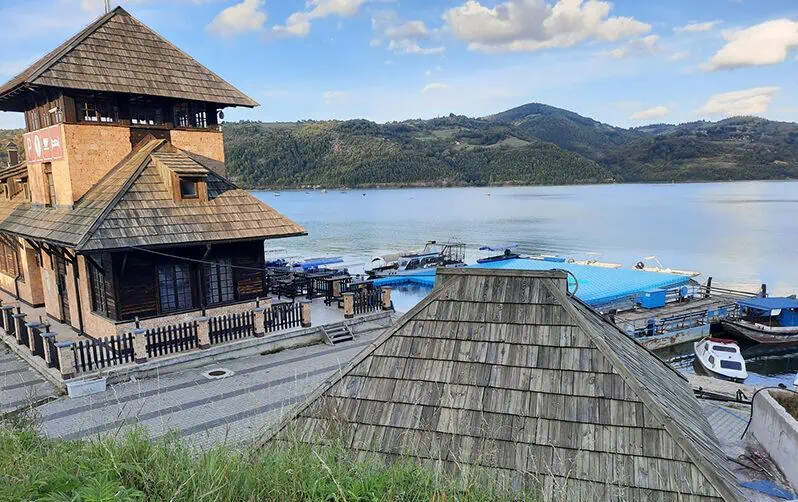
photography by: Omri Westmark
Zlatar Lake as it seen from Kokin Brod dam, traversable by road and pathway. The 1,264 meter long and 83-meter-tall structure is the largest stone dam anywhere in Europe.
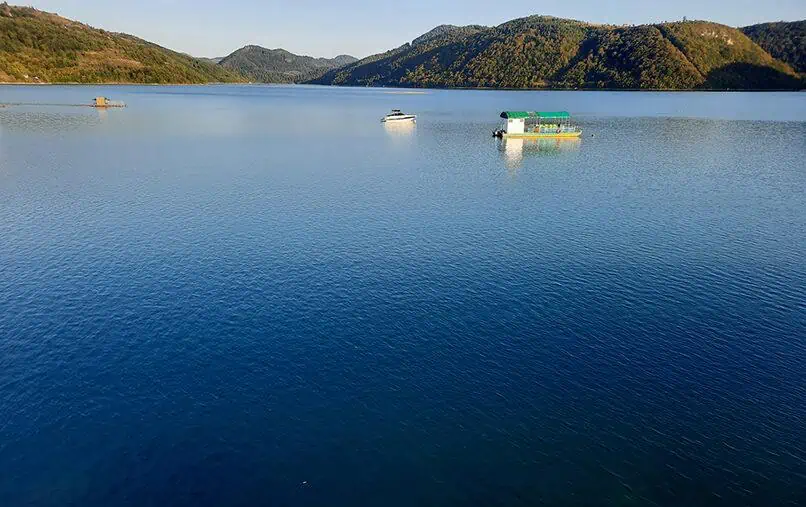
photography by: Omri Westmark
Perching along the lakefront are tens of cafés, restaurants and hotels, one of which is Motel “Zlatarsko Jezero”, popular for its spacious porch that overlooks the lake and its surrounding hilly terrain. A nearby staircase provides guests with access to the shore.

photography by: Omri Westmark
The motel’s restaurant is a charming stopover for travelers who visit the lake, offering various Serbian style dishes, most distinctly an assortment of freshly caught fish, abundantly found in the lake’s waters. Nevertheless, even if you’re only looking for a snack, a pickled pepper sprinkled with a local Kashkaval cheese can do the job.
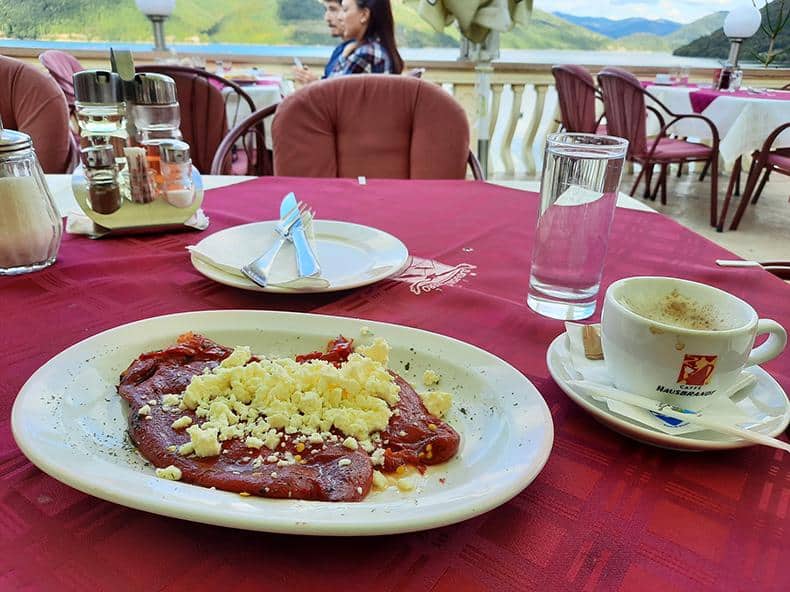
photography by: Omri Westmark
Tucked away in a faraway area near the town of Sjenica, the Uvac Special Nature Reserve is one of Serbia’s best-kept secrets (at least when it comes to foreigners), blessed with a fairytale-like scenery that is hardly associated with this part of the world. One of myriads of natural highlights in Serbia, the reserve is not easily accessible as it entails a cautious drive through a partly marked dirt road.
While traveling to Uvac can turn out as challenging, any traveler who does come will be rewarded with the breathtaking views of the winding Uvac River. Best known as Uvac meanders, this section of the river features snake-shaped curves, dramatically flanked by a 300-meter-deep-gorge, the result of a limestone erosion over a long period of time.
The Uvac meanders can also be experienced by an organized boat trip from nearby Zlatar Lake, however, the scenic spots scattered along both sides of the gorge are far more impressive, and can’t be really appreciated from down below.
Uvac Reserve has numerous scenic lookouts, but none of them is spectacular as Ledeni Vidikovac, accesible by a 30-minute drive on an unpaved road from Sjenica. When gazing at the gorge, look for the vultures who drift through the strong air currents.
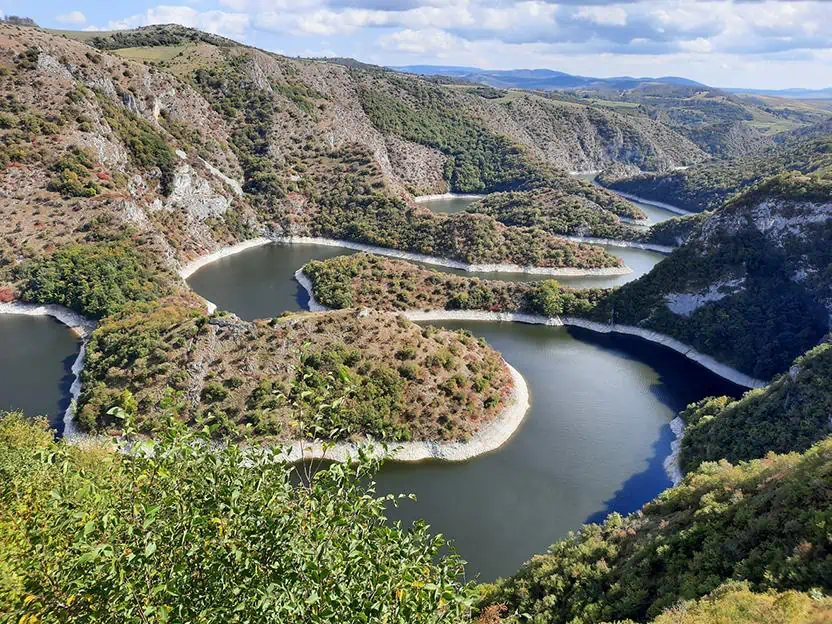
photography by: Omri Westmark
Ledeni Vidikovac is not often visited by large groups of tourists due to the viewpoint’s relative inaccessibility, what makes it a tranquil place to enjoy, free from swarms of camera-armed vacationists.
Curiously, the visitors who do come here will find a small kiosk (called “Markove Kolibe”). Adjacent to the viewpoint itself, this small booth offers a limited assortment of local beers and soft drinks.

photography by: Omri Westmark
If you’re looking to explore more parts of the reserve in a pursuit of different perspectives to gaze at the meanders, take the southward narrow trail that crosses the forest.
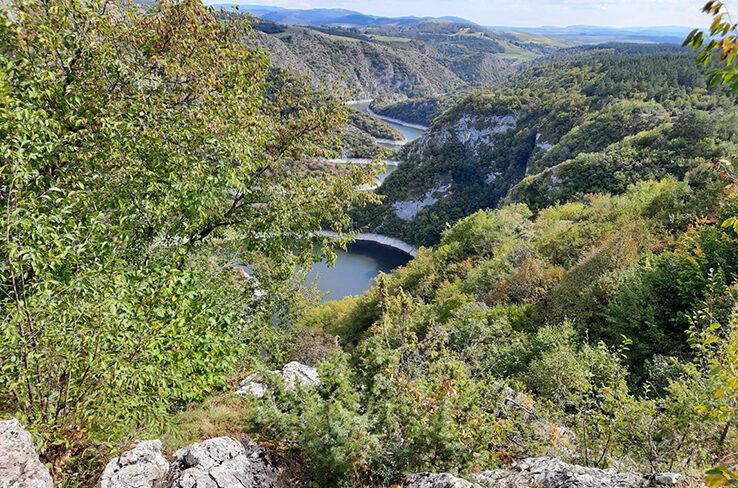
photography by: Omri Westmark
The aforementioned trail doesn’t only provide some truly spectacular views of Uvac River, it’s also a great hike by its own right, where one can witness Uvac’s impressive bio-diversity.
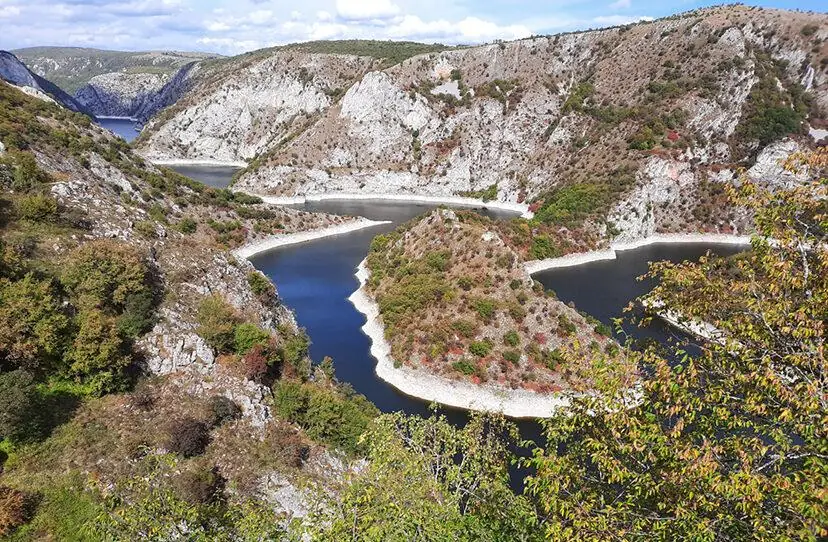
photography by: Omri Westmark